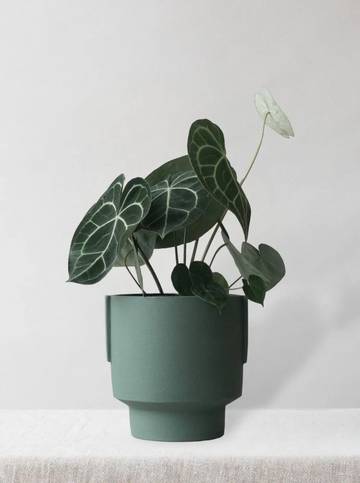
Anthurium Clarinervium
Anthurium Clarinervium Care Guide
Light
Anthurium Clarinervium prefers bright, indirect light. Avoid direct sunlight as it can scorch the leaves. A north or east-facing window with filtered light is ideal. If the leaves start to yellow or curl, it may indicate too much light exposure.
Water
Water your Anthurium Clarinervium when the top inch of the soil feels dry to the touch. Use room-temperature water and ensure the pot has good drainage to prevent waterlogging. Water thoroughly, allowing excess water to drain away. Overwatering can lead to root rot, so it's essential to let the soil dry out between waterings.
Humidity
Maintain high humidity levels between 60-80% to keep your Anthurium Clarinervium healthy. You can increase humidity by using a room humidifier, placing the plant on a pebble tray filled with water, or regularly misting the leaves. Low humidity can result in brown leaf tips and reduced growth.
Temperature
Anthurium Clarinervium thrives in warm temperatures between 65-80°F (18-27°C). Avoid placing the plant near drafts or heating/cooling vents as sudden temperature fluctuations can stress the plant.
Fertilizer
Feed your Anthurium Clarinervium with a balanced liquid fertilizer diluted to half strength every 4-6 weeks during the growing season (spring and summer). Reduce or stop fertilization during the winter months when the plant is dormant.
Toxicity
Anthurium Clarinervium is toxic to both pets and humans if ingested. The plant contains calcium oxalate crystals, which can cause irritation and swelling of the mouth, tongue, and throat. Keep the plant out of reach of children and pets and wash your hands after handling.
Additional Care Information
Repotting: Repot your Anthurium Clarinervium every 1-2 years using a well-draining potting mix.
Pruning: Remove any dead or yellowing leaves to encourage new growth and maintain the plant's appearance.
Flowering: Anthurium Clarinervium produces unique, heart-shaped leaves rather than traditional flowers. Ensure proper care to promote healthy leaf growth.
Troubleshooting
Yellowing Leaves: Indicates overwatering, underwatering, or insufficient light. Adjust watering and light conditions accordingly.
Brown Leaf Tips: Indicates low humidity or inconsistent watering. Increase humidity and maintain consistent moisture levels.
Pests: Watch for pests like aphids, mealybugs, and spider mites. Treat infestations promptly with insecticidal soap or neem oil.











